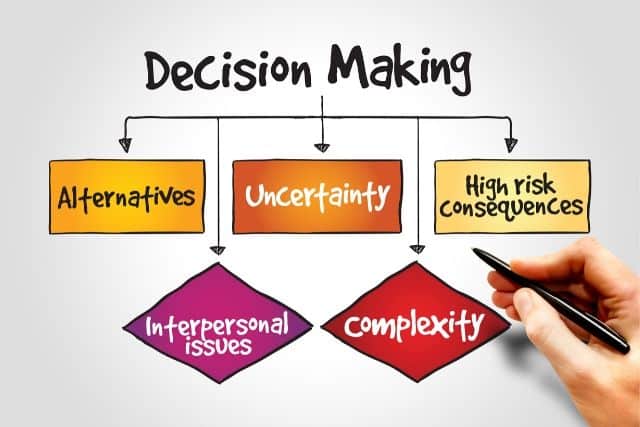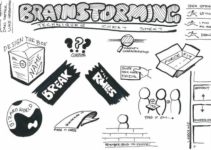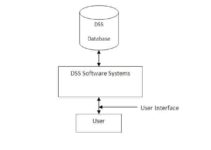Factors Affecting Decision-Making
Some of the factors and personal characteristics that have an impact on the decision-makers are described below. Some factors are more important at higher levels of management and others are more important at lower levels.
Programmed versus Non-programmed Decisions
Programmed decisions are made in predictable circumstances and managers have clear parameters and criteria. Problems are well structured and alternatives are well defined. The problems are solved and decisions are implemented through established policy directives, rules, and procedures.
Non-programmed decisions are the mode in unique circumstances and the results of such decisions are often unpredictable. Managers face ill-structured problems. These problems require a custom-mode response and are usually handled by the top management.
To start a new business, to merge with another business or to close a plant are all examples of non-programmed decisions. For example, when Steven Jobs and Stephen Wozniak introduced the first Apple microcomputer in 1978, they were not certain about the market for it. Today, Apple Macintosh computer is a major competitor to IBM computers.
Information Inputs
It is very important to have adequate and accurate information about the situation for decision making, otherwise the quality of the decision will suffer. It must be recognized, however, that on the individual has certain mental constraints, which limit the amount of information that he can adequately handle.
Less information is as dangerous as too much information. Some highly authoritative individuals do make decisions on the basis of comparatively less information when compared to more conservative decision-makers.
Prejudice
Prejudice and bias are introduced in our decisions by our perceptual processes and may cause us to make ineffective decisions. First, perception is highly selective, which means that we only accept what we want to accept, and hence only such type of information filters down to our senses.
Second, perception is highly subjective, meaning that information gets distorted in order to be consistent with our pre-established beliefs, attitudes, and values.
For example, a preconceived idea that a given person or an organization is an honest or deceptive, good or poor source of information, late or prompt on delivery, and so on, can have a considerable effect on the objective ability of the decision-maker and the quality of the decision.
Cognitive Constraints
A human brain, which is the source of thinking, creativity, and decision making, is limited in capacity in a number of ways. For example, except for some unique circumstances, our memory is short term, having the capacity of only a few ideas, words, and symbols.
Also, we cannot perform more than a limited number of calculations in our heads and it is tough to compare all the possible alternatives and make a choice.
Finally, psychologically, we are always uncomfortable with making decisions. We are never really sure if our choice of the alternative was correct and optimal until the impact of the implication of the decision has been felt. This makes us feel insecure.
Attitudes About Risk and Uncertainty
These attitudes are developed in a person, partly due to certain personal characteristics and partly due to organizational characteristics. If the organizational policy is such that it penalizes losses more than it rewards gains, then the decision-maker would tend to avoid the alternatives that have some chances of failure.
Thus a manager may avoid a potentially good opportunity if there is a slight chance of a loss. The personal characteristics of a decision-maker regarding his attitudes towards risk-taking affect the success of the decision. The risk-taking attitude is influenced by the following variables:
A. The intelligence of the decision-maker: Higher intelligence generally results in highly conservative attitudes and highly conservative decision-makers take low risks. There are others who are more willing to take calculated risks if the potential rewards are larger and there is some chance of success.
B. The expectation of the decision-maker: People with high expectations are generally highly optimistic in nature and are willing to make decisions even with less information. The decision-makers with low expectations of success will require more and more information to decide upon a course of action.
C. Time constraints: As the complexity of the personal habits of the decision-maker and the complexity of the decision variables increase, so does the time required to make a rational decision.
Even though there are certain individuals who work best under time pressures and may outperform others under severe time constraints, most people, require lime to gather all the available information for evaluation purposes.
However, most people under time pressure rely on the ‘heuristic approach’, which relies on satisfactory rather than optimal decisions, thus limiting the search for additional information, considering few alternatives and few characteristics of alternatives, and focusing on reasons to reject some alternatives.
This approach may also be in use when the cost of gathering information and evaluating all such information is too high.
Personal Habits
Personal habits of the decision-maker, formed through social environmental influences and personal perceptual processes must be studied in order to predict his decision-making style. Some people stick to their decisions even when these decisions are not optimal.
For example, Hitler found himself bound by his own decisions. Once he decided to attack Russia, there was no going back even when he realized that the decision was not the right one.
Some people cannot admit that they were wrong and they continue with their decisions even ignoring evidence that indicates that a change is necessary.
Some decision-makers shift the blame for failure on outside factors rather than their own mistakes. These personal habits have a great impact on organizational operations and effectiveness.
Social and Cultural Influences
The social and group norms exert considerable influence on the style of the decision-maker. Ebert and Mitchell define a social norm to be an evaluating scale designating on acceptable latitude and an objectionable latitude for behavior activity, events, beliefs, or any object of concern to members of a social unit.
In other words, the social norm is the standard and accepted way of making judgments.’
Similarly, cultural upbringing and various cultural dimensions have a profound impact on the decision-making style of an individual. For example, in the Japanese organizational system, a decision-maker arrives at a decision in consensus with others.
This style is culturally oriented and makes the implementation of the decision much easier since everybody participates in the decision-making process. In America, on the contrary, the decision-making style is generally individualistic with the help of decision models and quantitative techniques.




